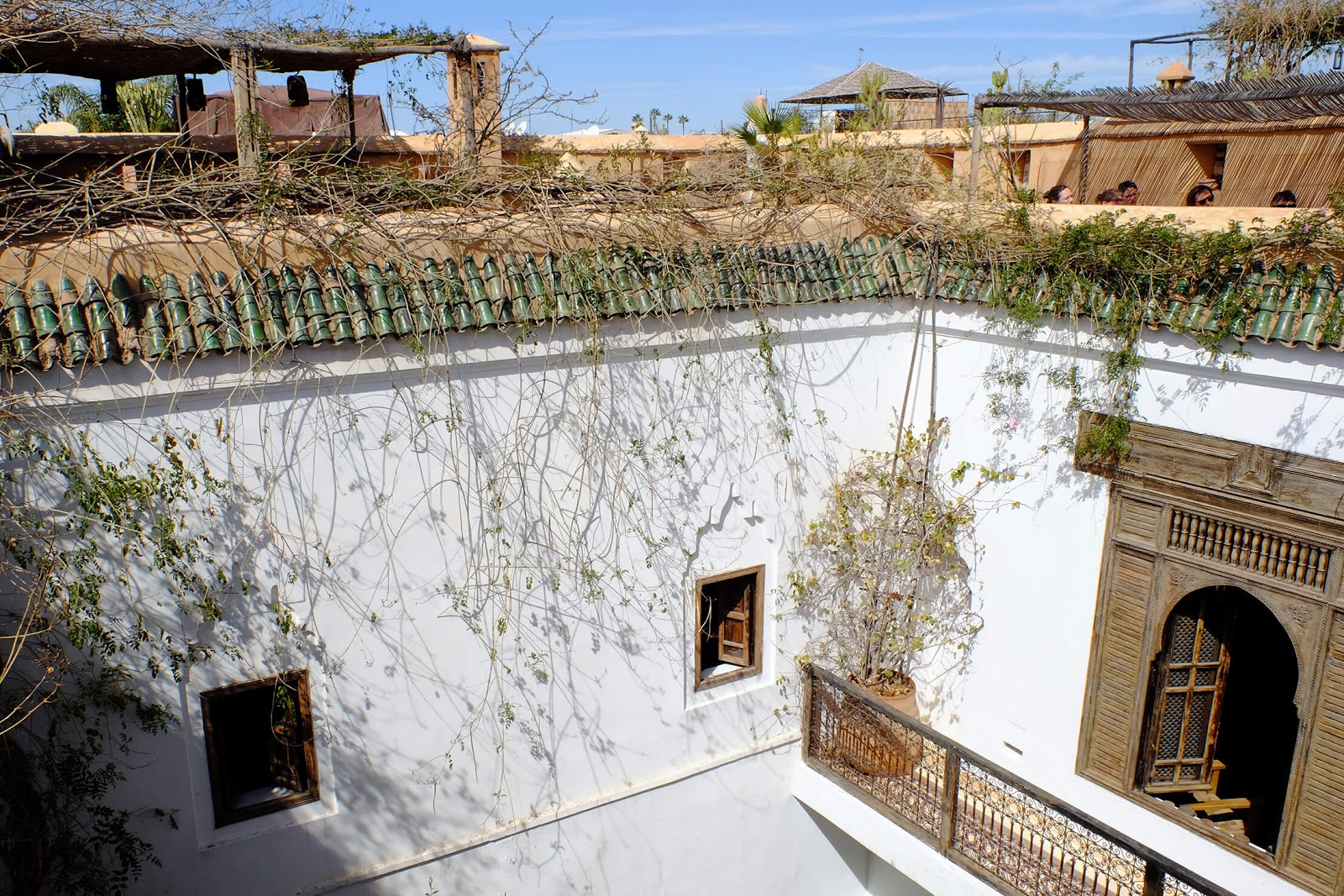












DIAMOND SHAPES RESEMBLE THE EYE, to protect from evil spells. Squares symbolize the house or the field, while zigzags represent the river. Red stands for woman, yellow for man, green for paradise, and blue for love. Color and pattern are means of expression for Berber women, who weave boucharouites or rag rugs from discarded clothing. Belonging to underprivileged sectors of society, and often unable to read or write, these weavers use craft to tell stories about their world.
On the one hand, boucharouites are highly intimate, unique pieces. Made from old garments belonging to the craftwoman's own family or community, they carry history in every fiber. On the other hand, boucharouites are a testament to the women's thrift. Weaving with recycled fabric is a much cheaper alternative to weaving with wool.
Boucharouites adorn Dar Dallah, an 18th century riad housing its namesake Musée Boucharouite. Founded in 2014 by French collector Patrick de Maillard, The museum exists to educate new generations about the craftsmanship behind its treasures, while supporting the individuals that weave them.
Musée Boucharouite, Azbezt 107, Derb El Cadi, Marrakech. Photos by Lady San Pedro.

COMMENTS
Post a Comment